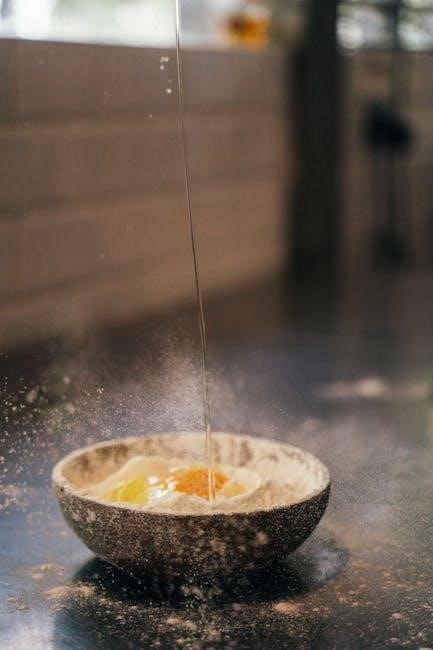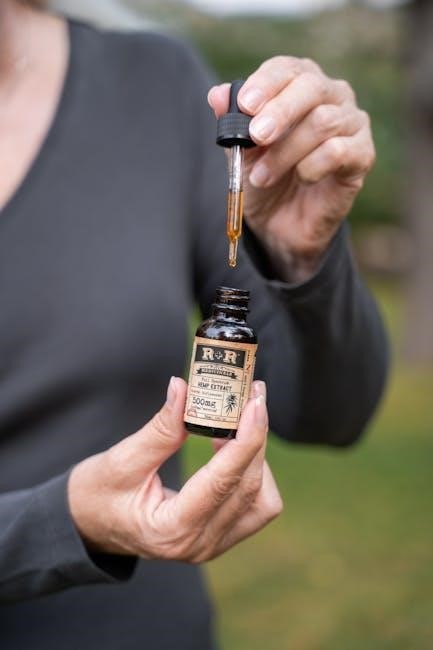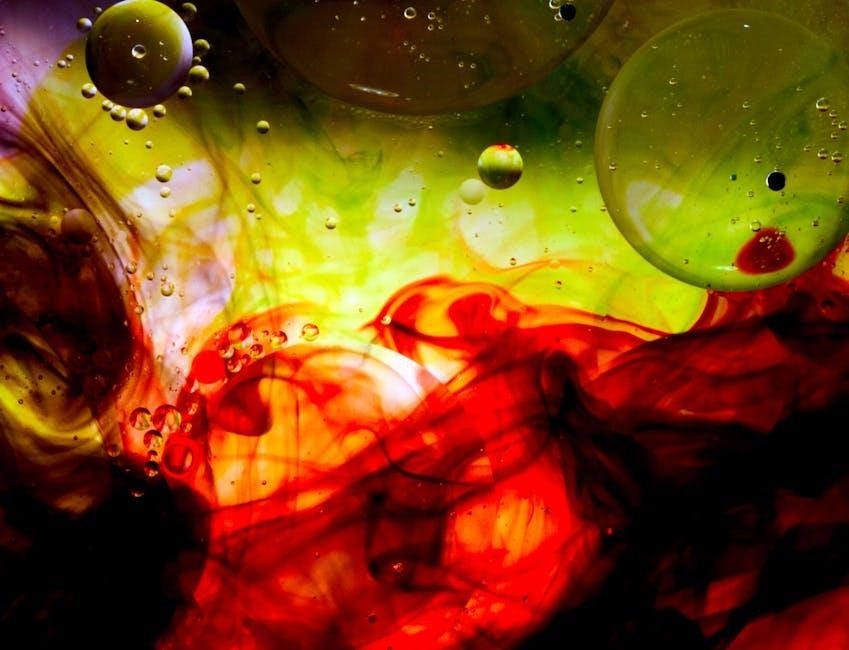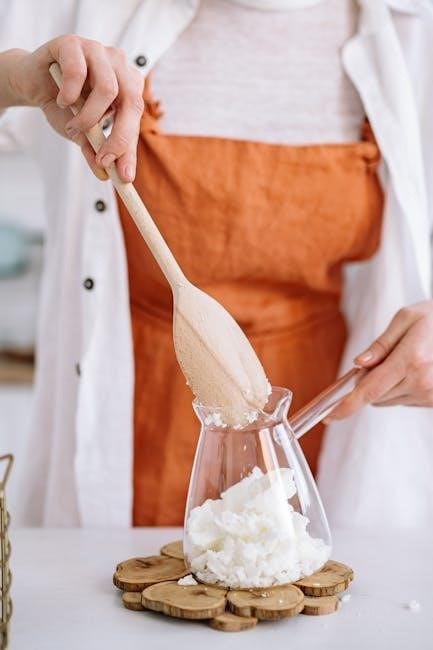Understanding Neem Oil Concentrate
What is Neem Oil Concentrate?
Neem oil concentrate is a natural pesticide derived from the seeds of the neem tree, known for its potent insecticidal and fungicidal properties․
Neem oil concentrate is a natural, potent pesticide extracted from the seeds of the neem tree (Azadirachta indica)․ It is a thick, dark brown to yellowish liquid with a strong, sulfur-like odor․ Cold-pressed neem oil is considered the highest quality, as no heat is used during extraction, preserving its active compounds․ The primary active ingredient, azadirachtin, is responsible for its insecticidal and fungicidal properties․ Neem oil concentrate is highly concentrated and must be diluted with water and mixed with an emulsifier, like soap, to create a usable solution for pest control․ It is biodegradable and non-toxic to humans and pets, making it a popular choice for organic gardening and houseplant care․ Proper mixing is essential to ensure its effectiveness and safety for plants․
Benefits of Using Neem Oil for Plants
Neem oil is a natural pesticide with insecticidal and fungicidal properties, making it effective against a wide range of pests like aphids, beetles, and mites․ It prevents fungal diseases and promotes healthy plant growth․ Neem oil disrupts insect life cycles, stopping reproduction and starving larvae․ It also acts as a natural repellent, protecting plants without harming beneficial insects․ Being biodegradable and non-toxic to humans and pets, it is an eco-friendly alternative to chemical pesticides․ Regular use can improve plant immunity and prevent infestations․ Neem oil is versatile, suitable for indoor and outdoor plants, and can be applied as a foliar spray or soil treatment, ensuring comprehensive protection and healthy growth․

Materials Needed for Mixing
The essential materials include neem oil concentrate, water, and a mild liquid soap as an emulsifier․ Optional additives like essential oils can mask the odor․
- Neem oil concentrate
- Water
- Mild liquid soap
- Essential oils (optional)
Essential Components
The key elements required for mixing neem oil concentrate include the neem oil itself and an emulsifier, typically a mild liquid soap or dish detergent, to facilitate proper mixing with water․
- Neem Oil Concentrate
- Emulsifier (e․g․, mild liquid soap or dish detergent)
- Water
These components ensure the neem oil mixes effectively with water, enhancing its application and efficacy on plants․
Optional Additives
Additives can enhance the effectiveness or appeal of neem oil solutions․ Essential oils like peppermint or lavender can mask the strong sulfuric odor of neem oil, making it more pleasant to use․ Additionally, garlic or sulfur-based compounds can be added to boost pest control properties․ Dish soap, beyond its role as an emulsifier, can also aid in breaking down insect exoskeletons․ These additives are optional but can provide extra benefits depending on the specific needs of your plants․ Always use them sparingly and in conjunction with the essential components to avoid overloading the solution․
- Essential oils (e․g․, peppermint, lavender)
- Garlic or sulfur-based compounds
- Additional dish soap

Basic Mixing Instructions
Combine neem oil concentrate with mild dish soap and water․ Stir well to ensure proper emulsification for effective pest control and plant safety․
- Neem oil concentrate
- Mild dish soap
- Water
Step-by-Step Mixing Process
To ensure effective use of neem oil concentrate, follow these steps:
- Choose a clean container and add 1 teaspoon of mild liquid soap to 1 quart of warm water․ Stir to create an emulsifier․
- Add 2 tablespoons of neem oil concentrate to the soapy water, stirring thoroughly to mix․
- Dilute the mixture with additional water to reach the desired volume, ensuring even distribution․
- Transfer the solution to a spray bottle and apply to plants, covering all surfaces thoroughly․
This process ensures proper emulsification and effective application for pest control․
Materials needed:
- Clean container
- Neem oil concentrate
- Mild liquid soap
- Warm water
- Spray bottle
Importance of Proper Emulsification
Proper emulsification is crucial when mixing neem oil concentrate, as it ensures the oil evenly disperses in water․ Neem oil is hydrophobic and does not mix naturally with water, requiring an emulsifier like liquid soap or dish detergent to stabilize the mixture․ Without proper emulsification, the oil and water may separate, reducing the solution’s effectiveness․ A well-emulsified mixture ensures the active compounds adhere to plant surfaces, providing consistent pest control and preventing uneven coverage․ Improper mixing can lead to poor results or potential harm to plants․ Always stir thoroughly and use an emulsifier to maintain the integrity of the solution and maximize its benefits․
Mixing Ratios for Different Applications

Mixing ratios vary by application: 2 tablespoons per gallon for general use, 4 tablespoons for severe infestations․ Brand-specific recommendations may differ, ensure to follow instructions․
General Mixing Ratios
The general mixing ratio for neem oil concentrate is typically 2 tablespoons (1 fluid ounce) per gallon of water․ For heavier infestations, increase to 4 tablespoons per gallon․ Always mix with a mild liquid soap or emulsifier to ensure proper blending․ Start with a smaller ratio for young plants or sensitive species․ Adjust concentrations based on the severity of pest or disease issues․ Consistent application every 7-14 days is recommended for optimal results․ Ensure thorough mixing and apply as a foliar spray or soil drench․ Avoid over-concentration, as it may harm plants․ Adjust ratios according to specific plant needs and pest severity for effective pest control․
Brand-Specific Recommendations
Brand-specific mixing ratios may vary slightly, but most recommend 2 tablespoons (1 fluid ounce) of neem oil concentrate per gallon of water․ For example, Safer Brand and Captain Jack’s Neem Oil Concentrate suggest this ratio for general pest control․ Some brands may advise adjusting the concentration based on the severity of the infestation or specific pests, such as spider mites or powdery mildew․ Always refer to the product label for exact instructions, as formulations can differ in potency and additives․ Following brand guidelines ensures optimal effectiveness and safety for your plants․ Proper dilution is critical to avoid harming plants while maintaining pest control efficacy․

Safety Precautions and Tips

Wear gloves and eye protection when mixing neem oil concentrate․ Ensure good ventilation to avoid inhaling fumes․ Avoid applying in direct sunlight to prevent leaf burn․ Test on a small plant area first to ensure no adverse reactions occur․
Handling Neem Oil Safely
When handling neem oil concentrate, wear gloves and protective eyewear to avoid skin and eye irritation․ Work in a well-ventilated area to minimize exposure to its strong sulfur-like odor․ Avoid ingesting neem oil or applying it to broken skin, as it can cause adverse reactions․ Keep the concentrate away from children and pets; If skin contact occurs, wash thoroughly with soap and water․ Neem oil is generally non-toxic to humans and pets but can cause discomfort if mishandled․ Always test a small area of the plant before full application to ensure no adverse effects․ Store the concentrate in a cool, dark place to maintain potency and safety․
Storage and Shelf Life
Neem oil concentrate should be stored in a cool, dark place to preserve its potency․ Keep it in an airtight container, away from direct sunlight and heat sources․ The shelf life of pure neem oil concentrate is typically up to 12 months when stored properly․ Once mixed with water, the solution should be used within 24 hours, as it can degrade quickly․ Refrigeration can extend the shelf life of mixed solutions for up to 1 week․ Always check for rancidity or separation before use․ If the oil hardens due to cold temperatures, gently warm it to restore liquidity without compromising its effectiveness․ Proper storage ensures optimal performance and safety;
Troubleshooting Common Issues
Common issues include separation of oil and water․ Use an emulsifier like liquid soap to ensure proper mixing․ Shake thoroughly before application for effectiveness and even coverage․
Separation of Oil and Water
Neem oil and water naturally separate due to their differing properties․ To prevent this, always use an emulsifier like liquid soap or dish detergent․ This helps stabilize the mixture․ When separation occurs, vigorously shake the solution before use․ Ensure the mixture is well-emulsified before application to maintain effectiveness․ If separation persists, adjust the ratio of emulsifier or re-stir thoroughly․ Proper emulsification ensures the neem oil adheres evenly to plant surfaces, maximizing pest control and health benefits․ Regular agitation during application is key to consistent coverage and effectiveness․ Never skip the emulsifier, as it is crucial for maintaining a uniform solution․ This step ensures optimal results when using neem oil concentrate for plant care․
Odor Management
Neem oil has a strong, sulfur-like odor that some find unpleasant․ To manage this, mix a few drops of essential oils (e․g․, peppermint, lavender, or lemon) into the solution․ This helps mask the smell without affecting its effectiveness․ When preparing the mixture, work in a well-ventilated area to minimize odor exposure․ If the scent remains bothersome, reduce the concentration of neem oil slightly, though this may lessen its potency․ Proper dilution and emulsification can also help reduce the intensity of the odor․ Always use cold-pressed neem oil, as it has a milder scent compared to other extraction methods․ Store the mixture in a sealed container to prevent the smell from spreading․ This ensures a more pleasant experience while maintaining the solution’s effectiveness for plant care․
